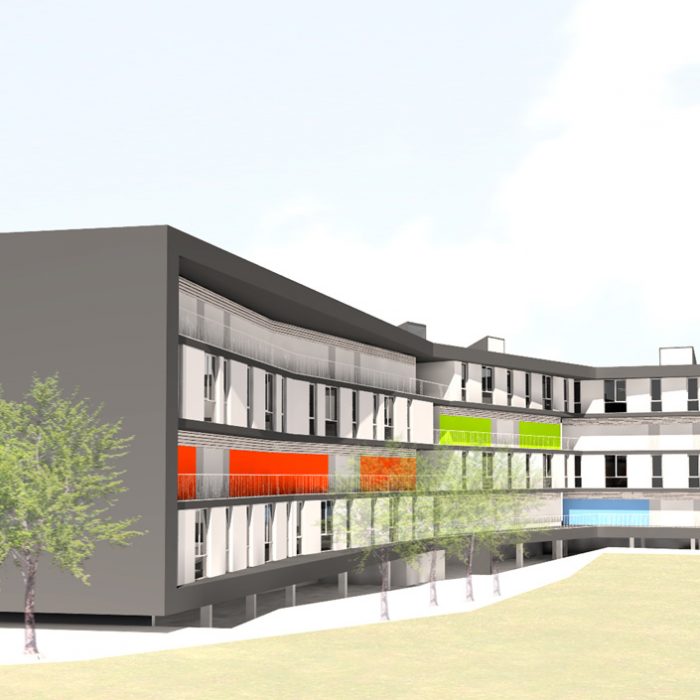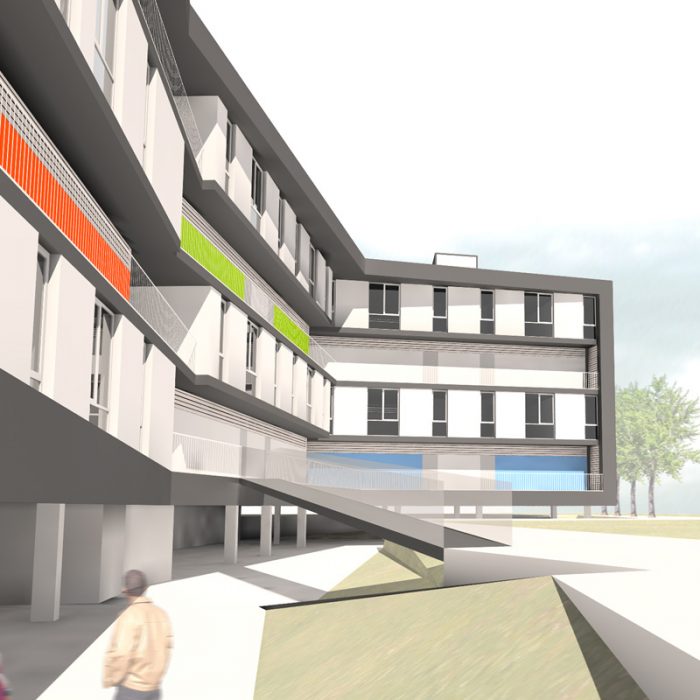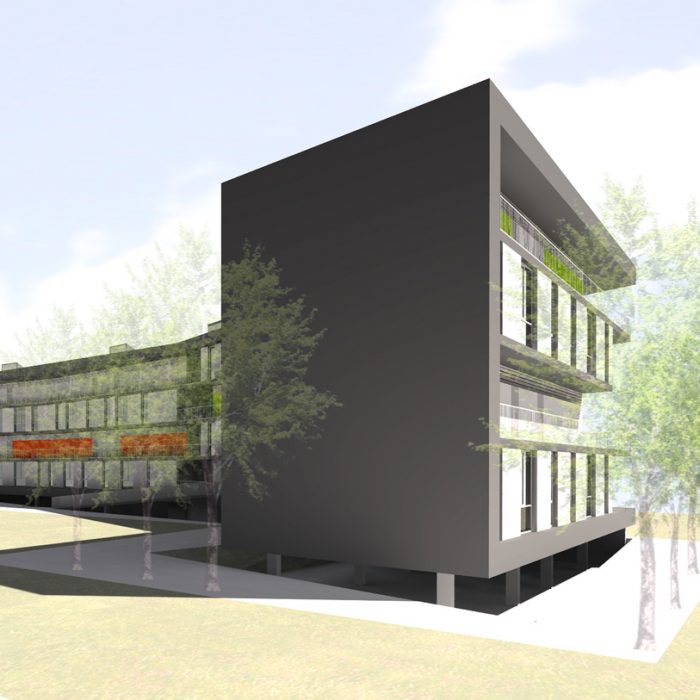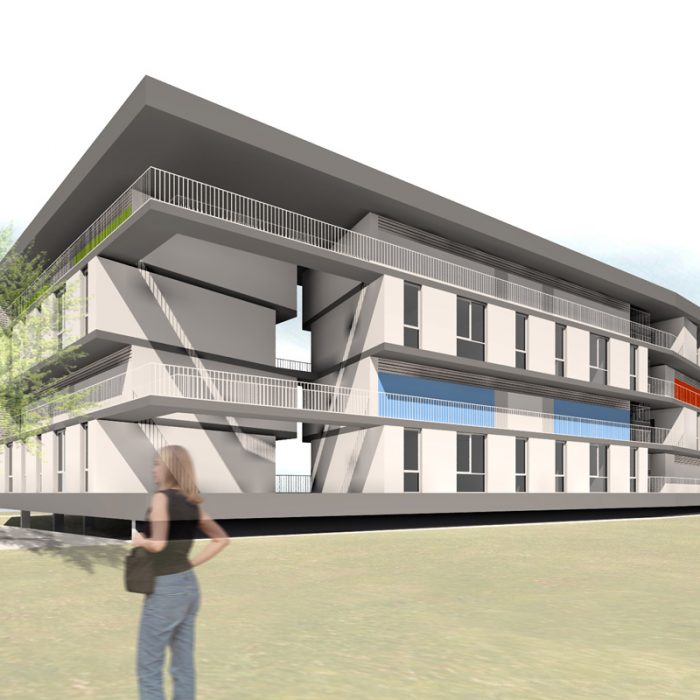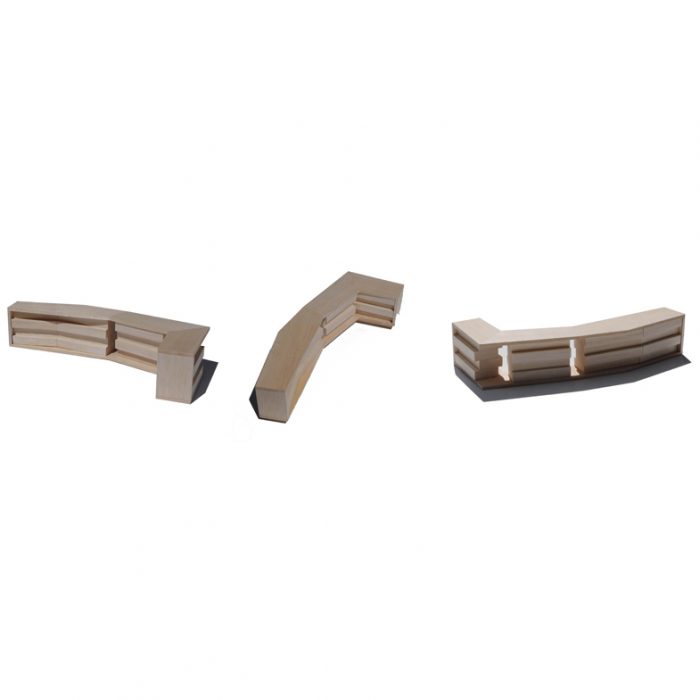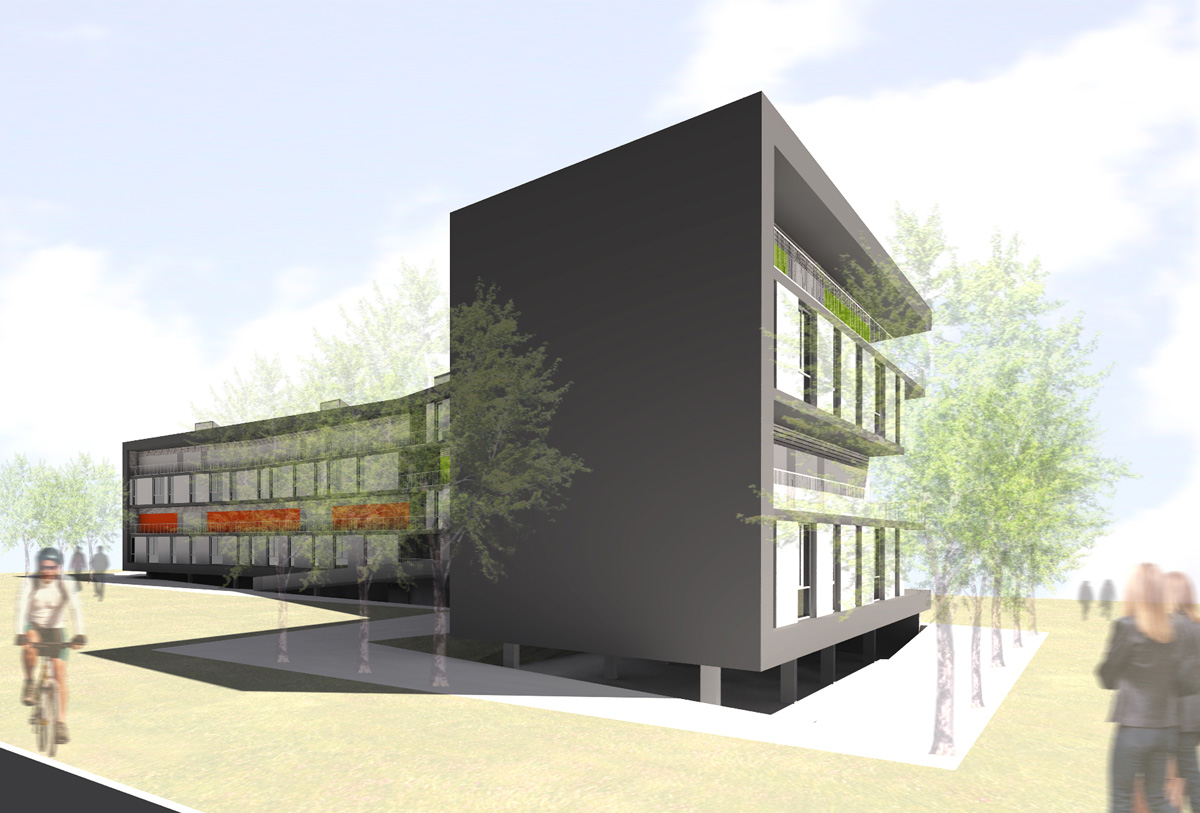
VIBRATIONS
32 social housing units in between the city and the mountain
FIRST PRIZE
When it comes to a geographic site forming a valley, the top position in one of its hillsides can be turned into a privileged point, as long as the inclusion in the landscape is right and makes the most of the possibilities of the place.
Our project aims at addressing a particular urban and landscape transition. This is done by using an architectural solution based on constructive economy and generation of experiences to respond to the site’s constraints, the functional requirements and the present reality of the area.
El Mantillo is a transition site between the urban sprawl and the nature of the mountains of Sierra de Loja. Parcel 1 is the crown of the building complex. Its location, higher than the rest of buildings, places it in the perfect position to see and to be seen. This double condition is the key feature to create both a views spot and a landmark in the area.
The building gets achieved by means of a porous screen volume, which breaks to adapt to the plot and the views and which vibrates in the inside to create special nuances arising from its structural compactness. To the North and East, the concave front gathers suggestive visions of the urban landscape of Loja and acts as background to the residential area. To the South and West, it adapts to the existing path by opening it convex front to the landscape of the Sierra de Periquetes de Loja.
The building is a hinge between urban and rural. A sign in the landscape open to two visions of the place. An overview of the landscape of Loja. This landscape duality is the premise for the following housing proposal, focused on making the most of the advantages of the location in the top of Loja’s North hillside.
The Project is developed starting from intended strategies to address the particular location, the functional requirements and the current situation of officially social protected housing in Loja.
Landscape strategies
The building is a hinge between urban and rural. Its form is determined by three factors:
- Location as “landscape viewpoint”, due to its higher location in respect to the other North-oriented buildings and the South urban limits.
- Adaptation to the plot and the rules of borderlines setbacks.
- To be seen from far away, because of its high crowing location.
This way, the building is a clear horizontal screen, but it appears fragmented and porous. This feature provides all the housing units with views to both orientations and both landscapes. This ensure of double possibility of dealing with landscape and climate in every unit built.Common areas are open spaces used as corridors and walkways where circulation takes place as we enjoy the landscape. Depending on the location and dimension, some points can become either balconies or terraces as an extension of the domestic space, or public elevated spaces for neighborhood interaction and meetings.
Economy strategies
All the construction and formal decisions of the project respond to the need of achieving an economic architectural solution. Based on the dignity of the user and the consistency with the place and the time, the project aims at creating a different and differentiating product at a minimum cost:
- The residential estate is a semi-compact building. It consists of three compact blocks based on a repeatable basic module which uses the same structural and constructive solution in terms of finishing and installations.
- The functional and economic efficiencies of the housing complex is based on the following elements: continuity of the installations, homogeneity of the windows dimensions, structural and layout modulation, and organizational clarity.
- Each basic housing module consists of a wing for rooms with plumbing (bathroom, washing place and kitchen) which appear together and are symmetric. These share the installations’ pipes chamber. There is a vertical continuity for this wing, present in all the floors up to the roof.
- Windows present the same modulation depending if they look to the corridor or not.
- Common areas are external but covered. Only half of them are considered in terms of built-up surface and at the same time this reduces their construction cost.
- The parking, located in the semibasement, is made as an open, half-buried space, covered and in continuity with the public space associated to the building. Topography is used to introduce the open parking floor. This reduces its cost and ensures its correct integration within the complex.
- Due to the proposal’s formal strength and architectural consistency, the quality of finishings gains relative importance. For this reason, the choice of the finishings, based on viable margins in terms of profitability of the officially protected housing in Loja, does not affect the architectural quality of the project.
Comfort and flexibility strategies
The basic typology presents a clear layout with a large longitudinal living-room as nucleus and only hall of the house. It has double orientation, views and ventilation. This eliminates corridors, so the useful space is almost at 100% allocated to living spaces, which are generous in dimension and spatially consistent.
The housing units are composed of three pieces; one lateral wing made of two equal bedrooms, central nucleus and another lateral wing made of rooms with plumbing.
Such a clear geometric structure offers a certain functional flexibility which allows customization of every house depending on the user’s needs:
- The bedrooms are equal, and therefore interchangeable.
- The double ventilation in the living-room makes the furnishing variable depending on the position of the kitchen door (see pattern plant).
- The washing room can be turned into a toilet.
– Cualquier unidad de vivienda puede ser adaptada para minusválidos con un mínimo coste de obra (ver planta adaptada)
– Any housing unit can be adapted to suit people with reduced mobility at a minimum cost.
Sustainability strategy
The simplicity of the construction of the building arises from the clarity in terms of organisation. Moreover a series of decisions about the constructing system and the functional layout increase its sustainability:
- Double N-S orientation of the housing units, allowing proper exposure to sunlight and therefore energy saving.
- Double ventilation in all housing units, which allows better climate adaptation during the summer.
- All the rooms with plumbing are close together makes possible to gather all the installations in a single chamber inside every one of the basic housing modules.
- Solar energy systems installed in the roof.
location: Urbanización El Mantillo. Loja, Granada (Spain) authors_Jose Luis Muñoz Muñoz and Antonio Cayuelas Porras collaborators_Daniel Cano Expósito (architect), Ornelia Mesa Rodríguez (architecture student) client_Emuviloja S.L. basic project_ May 2008 built-up area_4.156,55 m2 budget_1.975.950 €
